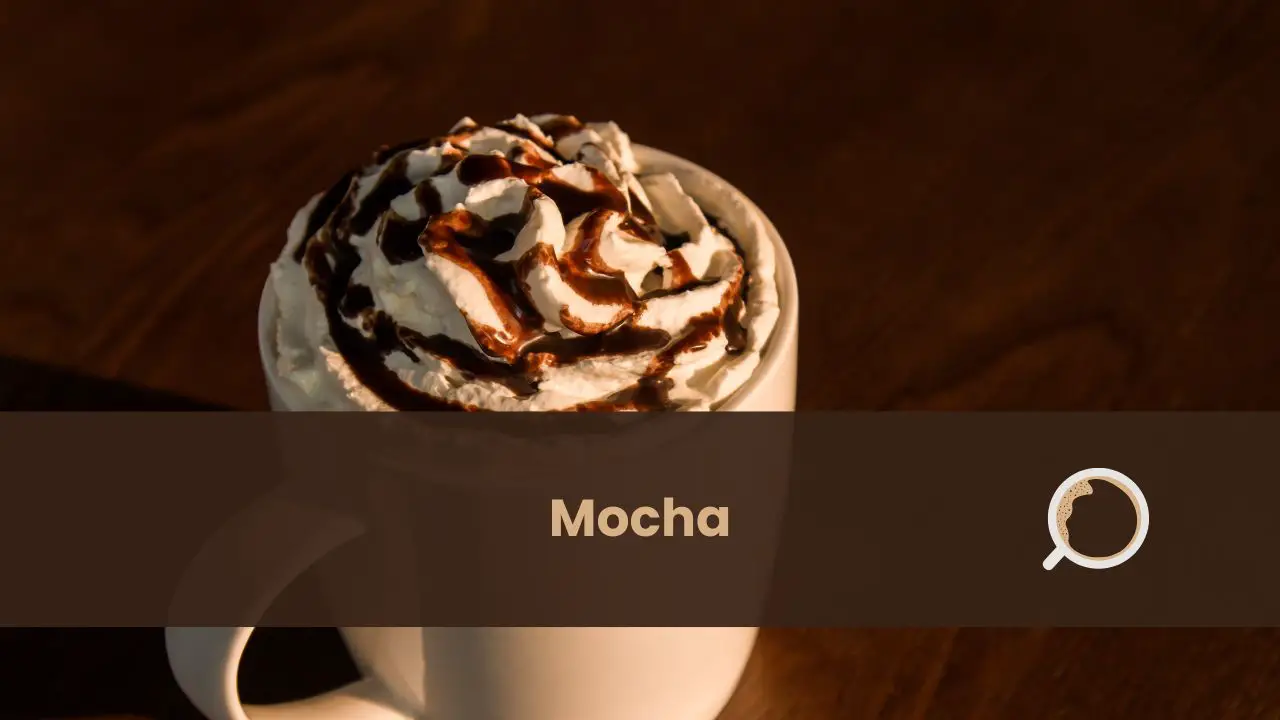Last Updated on: 6th September 2023, 05:46 pm
As the saying goes, ‘life is too short for bad coffee.’
And when it comes to indulging in a cup of satisfying and comforting coffee, nothing quite compares to a latte. A latte is more than just a drink; it’s an experience that combines the perfect balance of espresso and steamed milk.
When you order a latte at your favorite café, you know exactly what you’re getting – a creamy, frothy cup of coffee that can be customized to your liking. But have you ever wondered about the origins of this beloved beverage? Or how many ounces are in a standard latte cup?
In this article, we’ll explore everything you need to know about lattes – from their definition and ingredients to their taste and different types. So grab your favorite mug and get ready to dive into the world of lattes!
What Is A Latte Coffee?
If you’re a coffee lover, you’ve probably tasted or at least heard of a latte.
But do you know what it is? A latte is a coffee drink made up of espresso and steamed milk, with a small layer of foam on top.
What Is In A Latte?
The ingredients of a latte include espresso, steamed milk, and a layer of frothed milk on top. It’s essential to get the ratios right to create the perfect latte.
Here’s what you need to know about each ingredient:
- Espresso: This is the foundation of any latte. It’s made by high-pressure forcing hot water through finely-ground coffee beans.
- Steamed Milk: The steaming process adds texture, sweetness, and temperature to the milk, making it frothy and creamy.
- Frothed Milk: This is created by whipping air into the milk using a steam wand or frother. It creates a light foam that sits on top of the latte.
- Optional Flavors: You can add syrups or spices like vanilla, caramel, or cinnamon to enhance the taste.
What Is The Origin Of Latte?
Dating back to the early 1900s in Italy, a popular morning beverage consisted of espresso and steamed milk known as ‘caffè latte.’ The word ‘latte’ comes from Italian and means ‘milk.’ Italians originally consumed this drink before work as a quick breakfast replacement. It wasn’t until the 1980s that the latte became popular in the United States.
The origin of the latte is rooted in Italy’s coffee culture. Espresso was created in Italy during the late 1800s, and with it came various espresso-based drinks like cappuccinos and lattes. The combination of espresso and steamed milk allowed a creamy texture, unlike any other coffee drink. Today, lattes can be found worldwide, with variations based on regional tastes and ingredients.
How Did Latte Get its Name?
Did you know the name ‘latte’ comes from the Italian word for milk? Yes, that’s right! A latte is a coffee drink made with espresso and steamed milk. The ratio of milk to espresso can vary, but it typically consists of one-third espresso and two-thirds steamed milk.
The origin of the latte can be traced back to Italy in the 17th century, where it was known as café au lait.
It wasn’t until the 1980s, when Starbucks introduced its version of the latte, that it became popular in America.
Today, lattes are enjoyed worldwide and come in various flavors such as vanilla, caramel, and mocha.
With its smooth, creamy texture and rich coffee flavor, it’s no wonder this drink has become a staple in many coffee shops around the globe!
Does Latte Have A National Day?
Get ready to mark your calendars because there’s an annual celebration dedicated to this beloved coffee beverage! Yes, you read that right. Latte has its national day, celebrated every year on February 11th.
This special day is known as National Latte Day, and it’s a perfect opportunity for all latte lovers out there to indulge in their favorite drink.
To celebrate National Latte Day, here are three fun ways you can enjoy your latte:
- Try a new type of latte: There are many types of lattes, from classic vanilla lattes to trendy pumpkin spice lattes. Take this opportunity to try something new and experiment with different flavors.
- Host a latte party: Invite your friends over and have a latte-making competition. You can also serve some delicious snacks that pair well with lattes, such as pastries or biscotti.
- Learn about the origin of lattes: Did you know that lattes originated in Italy? Take some time on National Latte Day to learn more about the history of this beloved beverage.
No matter how you celebrate National Latte Day, savor every sip and appreciate the artistry behind making this delicious drink. After all, with its rich history and variety of flavors, the latte truly deserves its national day!
How Do You Spell Latte?
Contractions can be confusing, especially when spelling words like latte – is it spelled with one ‘t’ or two? The correct spelling for the popular coffee beverage is ‘latte,’ with two ‘t’s.’
Knowing the proper spelling and understanding of what goes into making a latte can help you confidently order your favorite coffee beverage and appreciate its origin and taste even more.
How Do You Pronounce Latte?
Now that you know how to spell latte, it’s time to learn how to pronounce it correctly.
The word ‘latte’ comes from the Italian caffè latte, which means ‘milk coffee.’ In Italian, the pronunciation is ‘LAH-teh,’ emphasizing the first syllable. However, in English, the pronunciation has become more like ‘lah-TAY.’
Knowing how to pronounce latte properly will help you confidently order your favorite coffee drink at your local cafe or when traveling abroad!
What Does Latte Taste Like?
Are you curious if latte is the same as coffee? Let’s dive into the discussion on this subtopic.
Did you know that a latte is typically served hot but can also be enjoyed cold?
And when it comes to drinking your latte, do you need a special cup or mug?
These are some of the questions we’ll explore in this passionate and technical conversation about what makes a latte unique.
Is Latte The Same As Coffee?
Latte, a creamy and frothy beverage made with espresso and steamed milk, can be considered a type of coffee. However, it’s important to note that latte differs from regular black coffee. Here are some differences between the two:
- Coffee is made by brewing ground coffee beans with hot water. On the other hand, a latte uses espresso shots as its base.
- Latte contains steamed milk, while black coffee doesn’t.
- The ratio of espresso to milk in a latte can vary depending on the latte type. For example, a traditional latte has one shot of espresso and about 6 ounces of steamed milk, while a larger size like a venti, may have two shots or more.
- Different lattes use different flavors or ingredients like matcha powder or caramel syrup.
- While both coffee and latte contain caffeine, the amount can differ due to the variation in ratios and types.
While latte falls under the umbrella term ‘coffee,’ it has distinct differences that set it apart from regular black coffee. Whether you prefer your caffeine fix straight up or with added flavor and frothiness, there’s no denying that lattes have become a beloved staple in many people’s daily routines.
Is Latte Served Hot Or Cold?
You may be wondering whether your latte is typically served hot or cold. The answer is that it can be served both ways, depending on the type of latte you order.
Traditionally, a hot latte is served with steamed milk and espresso. However, many coffee shops offer iced lattes for those who prefer a cooler beverage.
To make an iced latte, the barista will start by brewing a shot of espresso and then pouring it over ice in a cup. Next, they’ll add cold milk to the mix and stir everything until it’s well combined. You can also opt for flavored syrups or sweeteners to add flavor to your drink.
Whether you like your latte hot or cold comes down to personal preference – both have their unique appeal!
Do You Need To Drink Latte From A Special Cup Or Mug?
Don’t even think about sipping your latte from a regular old mug – you need a special cup to experience the decadence of this creamy beverage truly.
A proper latte cup should be wider at the top than at the bottom, allowing for more surface area to showcase the rich, frothy foam on top.
The material of the cup is also important – ceramic or glass are preferred over plastic, as they retain heat better and don’t alter the taste of the latte.
If you’re serious about your latte drinking experience, consider investing in cups that match your style.
Many specialty coffee shops and kitchenware stores sell unique designs that make your morning routine feel like a luxurious indulgence.
After all, part of what makes lattes so enjoyable is their aesthetic appeal – watching the swirls of milk and espresso blend in a beautifully crafted cup is almost as satisfying as taking that first sip.
So next time you order or make a latte, choose your vessel carefully – it can make all the difference in enhancing those delicious flavors.
How Many Ounces Is A Latte Cup?
Knowing how many ounces you’re getting in your latte cup is important at any coffee shop. The standard size for a latte is 8-12 ounces, but this can vary depending on the café and the type of latte you order.
Some shops may offer larger sizes or mini lattes for those wanting a smaller portion. When considering the size of your latte cup, it’s also important to consider the ingredients for making this popular drink.
Whether you prefer a traditional or modern take on your latte, knowing the size of your cup can help ensure you get just the right amount of caffeine and flavor with every sip.
What Are The Different Types Of Latte?
Now that you know how many ounces a latte cup has, let’s dive into the different types of lattes!
As you may already know, a latte is an espresso-based drink with steamed milk and a small amount of foam. But did you know that there are several variations of this popular beverage?
Firstly, there’s the classic latte made with one shot of espresso and steamed milk. Then there’s the flavored latte, which adds syrups such as vanilla or caramel to enhance the taste.
Another type is the iced latte – perfect for hot summer days – which uses cold milk instead of steamed and can be served with flavorings or whipped cream on top. Finally, the breve latte replaces regular milk with half-and-half or cream for an extra creamy texture.
Knowing all these types will be useful next time you order your favorite coffee drink!
What Do You Need To Make Latte?
To make a latte, you’ll need a few key tools. One of which is a latte machine. These machines are designed to steam and froth milk, creating the rich, creamy texture that makes a latte delicious. They are the same as an espresso machine.
So if you’re ready to start making your lattes at home, investing in a quality latte maker is worth considering!
What Are Latte Makers?
You may wonder what a latte maker is and whether it’s worth investing in one for your daily coffee routine.
A latte maker, also known as an espresso machine, is a device that allows you to make cafe-quality lattes at home. It uses pressurized water to extract the flavor from finely ground coffee beans and mix it with steamed milk to create a creamy, frothy beverage.
Investing in a latte maker can be a great choice for those who enjoy drinking lattes regularly. Not only will it save you money in the long run compared to buying lattes at cafes, but it also allows you more control over the ingredients used in your drink.
You can choose the type of coffee beans and milk that best suits your taste preferences, ensuring that each cup of latte you make is tailored to your liking.
Does Latte Have Milk?
Yes, lattes have milk.
Are you a latte lover? Then you must know the importance of milk in a latte. The milk used to make a latte can significantly impact its taste and texture, making it creamier or less frothy.
This discussion will dive into how much milk is typically used in various lattes and how it affects your favorite coffee beverage.
How Much Milk In A Latte?
Did you know that a classic latte has one-third espresso and two-thirds steamed milk with a little foam on top? If you’re wondering how much milk is in a latte, it’s typically around 8-15 ounces, depending on the size ordered.
But did you also know there are various lattes, such as flavored ones like vanilla or caramel, or even dairy-free options using alternative milk? The amount of milk used can vary based on personal preference and the latte type.
Regardless, the combination of rich espresso and creamy steamed milk creates a deliciously smooth and satisfying drink that has become a staple in coffee shops worldwide whether hot or iced, lattes continue to be popular among coffee lovers everywhere.
So, next time you order your favorite latte, note how much milk is used to create this beloved beverage!
How Does Latte Compare To Other Coffee Drinks?
When comparing coffee drinks, you’ll notice that a latte has a smoother and creamier texture than other options like Americanos or black coffee. This is because lattes are primarily made of steamed milk and espresso. In contrast, Americanos are just water mixed with espresso, and black coffee contains only hot water and ground coffee beans. The addition of milk in a latte not only enhances its texture but also adds sweetness to the taste.
To further understand the differences between latte and other coffee drinks, let’s compare them in terms of ingredients, taste, and types in this table:
| Coffee Drink | Ingredients | Taste | Types |
|---|---|---|---|
| Latte | Espresso shots, steamed milk, foam | Creamy & sweet | Vanilla,latte macchiato,mocha |
| Americano | Espresso shots, hot water | Strong & bitter | Long Black,Cafe Crema |
| Black Coffee | Ground coffee beans, hot water | Bitter & robust | Drip Coffee,French Press |
As seen in the table above, lattes offer more variety in types compared to Americanos or black coffee. Lattes can be customized with flavors like vanilla or mocha while maintaining their signature creamy texture.
In contrast, Americanos tend to have a strong bitter taste, which may not appeal to everyone. At the same time, black coffee is known for its robust flavor profile that can be overpowering for some individuals. Overall, the latte is worth trying if you’re looking for a sweeter and creamier option.
Is Latte Healthy?
If you’re pregnant, you might wonder if a latte is healthy for you and your growing baby. The good news is that a moderate amount of caffeine is generally considered safe during pregnancy, and a typical latte contains around 75-150mg of caffeine. However, it’s always best to consult your doctor about your circumstances.
However, they may not be good to drink while fasting.
How you feel after drinking a latte depends on various factors, such as the quality of the beans, the ratio of milk to espresso, and your tolerance for caffeine.
Is Latte Healthy For Pregnant Women?
As a pregnant woman, you may be wondering if enjoying a latte is a healthy choice for you and your growing baby. While it’s true that caffeine intake should be limited during pregnancy, the occasional latte can still be enjoyed in moderation.
Latte is made with espresso and steamed milk, so it contains caffeine, which is not recommended to consume more than 200 milligrams per day during pregnancy. However, the amount of caffeine in a latte varies depending on its size and the number of shots of espresso used.
Regarding ingredients, lattes are typically made with whole or non-dairy alternatives such as almond or soy milk. Whole milk provides calcium and protein essential for your baby’s growth and development, while non-dairy alternatives may contain other important nutrients like vitamin D or potassium.
Lattes also come in different flavors like vanilla or caramel, which can add extra calories and sugar content to the drink. Therefore, it’s important to choose wisely if you want to include lattes in your diet during pregnancy.
How Do You Feel After Drinking Latte?
After sipping on a latte, you may notice a boost in energy and a feeling of alertness thanks to the caffeine content. This is because a typical latte contains one or two shots of espresso, which can pack quite a punch.
Additionally, the milk used in lattes contains natural sugars that can help fuel your body and give you an extra pep in your step. But it’s not just the caffeine content that makes lattes such a popular choice at cafes worldwide.
So whether you’re looking for a morning pick-me-up or want to indulge in something delicious, a latte will hit the spot.
Comparing With Other Coffee Drinks
- Latte vs Cappuccino
- Latte vs Mocha
- Latte vs Frappuccino
- Latte vs Macchiato
- Iced Latte vs Iced Macchiato
- Iced Latte vs Iced Cappuccino
- Iced Latte vs Iced Mocha
Conclusion
Congratulations! You’re now a latte expert. With the knowledge of a latte and its types, ingredients, and taste, you can confidently order your favorite drink at any coffee shop.
But why stop ordering? With the right tools and ingredients, you can make your delicious lattes from the comfort of your home.
As you savor each sip of your creamy, frothy latte, think about its origin in Europe and how it has evolved into one of the most popular coffee drinks in the world. With its balance of rich espresso shots and steamed milk, there’s no wonder why people love this drink so much.
So go ahead and indulge in a latte today. Whether you prefer iced or hot, flavored or classic, there’s a latte for everyone.
And who knows? Maybe you’ll become such an expert that even baristas will come to you for advice on perfecting their lattes.

Mike Shaw
Mike is a fervent aficionado of all things coffee. His journey has taken him from the verdant coffee farms of South America to the vibrant coffeehouses of Europe and many places in between. Over the years, he's delved deep into the intricate tapestry of coffee, savoring, brewing, and analyzing myriad varieties. For Mike, coffee transcends its role as a morning energizer; it's a world waiting to be explored and cherished.








